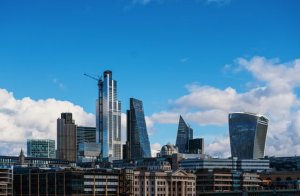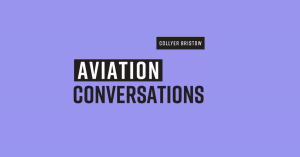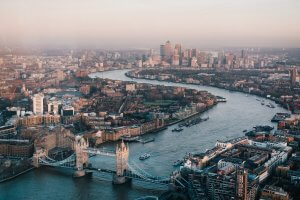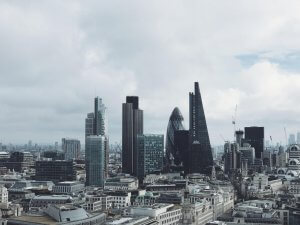- Banking & financial disputes
- Financial services

Longer Reads
Drone related incidents – The costs for airlines
Drone related incidents involving aircraft have increased dramatically over the last few years. The recent Government consultation on the use of drones reported that the number of drone-related incidents have risen from 6 in 2014 to 93 in 2017. On 19 December 2018, such an incident caused mayhem at Gatwick Airport just before the busy Christmas break.
3 minute read
Published 11 January 2019
Key information
The impact on passengers following the Gatwick incident, where drone sightings caused the runway to be closed for over 24 hours, has been well documented. It has been estimated that somewhere in the region of 140,000 travellers had their plans disrupted (or often ruined) as a result. Insurance, or potentially credit card companies, will hopefully enable flyers to recover any financial losses that they have suffered (not that this will necessarily make up for a lost holiday or chance to spend the Christmas break with loved-ones based aboard), but how will the airlines recover their substantial losses?
The focus of the Gatwick incident in the media has (rightly) been on consumers, but airlines have also been left substantially out of pocket. The episode also comes at an unwelcome time for airlines as market conditions become more challenging as a result of overcapacity.
When flights are significantly delayed, airlines suffer a broad range of additional costs, these can include:
- Passenger costs- although the compensation payable under EC Regulation 261/2004 will not be a factor in the most recent incident at Gatwick (the CAA has opined that the event constituted an ‘extraordinary circumstance’ – relieving airlines of the obligation to pay compensation to passengers), airlines were still in many cases required to provide food, refreshments, accommodation and cover any transit costs for passengers. In addition, the airlines will have had to provide alternative flights or refunds to passengers who could no longer fly.
- Additional fuel costs- once they were back in the air, airlines may have had to incur an accelerated fuel burn to make up lost time (by flying their aircraft faster). In addition, many aircraft would have found themselves using extra fuel as a result of lengthy periods in holding patterns above the UK whilst congestion was cleared. (There may also be additional emissions costs).
- Crew and ground-handling costs- once flight delays extend beyond a few hours, airlines quickly encounter crewing problems as their pilots and cabin staff start to find themselves running out of flying hours (which are limited by law) and substitute crew need to be sourced. Likewise, airlines may find that their contracted ground handlers are not available to meet their aircraft on arrival if they have landed at unscheduled times (or indeed entirely different airports), and so additional teams will need to be sourced (and paid for).
- Additional air traffic control charges- similarly airlines may incur additional ATC charges if they are required to fly beyond their scheduled flight plan.
- Loss of reputation- regardless of where the blame lays for the Gatwick incident, some passengers will inevitably associate their experience with the airline and this may in turn lead to a loss of custom.
It has been reported that around 1000 flights were affected by the runway closures at Gatwick before Christmas and accordingly the resulting losses for airlines are likely to have been very substantial. Can these losses be recovered by airlines? Aside for the drone operators (who at the time of writing remain at large), and subject to any contractual rights, who else is potentially liable when such incidents occur?
The spotlight is now beginning to fall on the airports themselves. In the days after the Gatwick incident it was reported that the airport had purchased counter-drone technologies (similar to those used by the armed services at the time of the disruption). Subsequent reports suggest that similar technologies are being installed at other airports around the UK, including London Heathrow – which suffered its own drone-related shut down (albeit for only an hour) on 8 January.
The question then is why haven’t airports taken measures to install these technologies before now? The threat of incidents such as occurred at Gatwick before Christmas has been well known of for a number of years. Indeed Gatwick itself had a similar incident, on much smaller scale, in July 2017, and reports suggest that the installation of counter-drone technology has been under consideration internally (although not implemented) at Gatwick for some time. The fact that steps to install the technology have been taken so quickly now is telling.
The level of disruption at Gatwick was unprecedented, but was the cause of the incident itself foreseeable? It’s arguable that it was, particularly given the near exponential rise of drone-related incidents over the last few years. Assuming that is correct, then whose obligation was it to install the proper technologies (which have been available for some time) to protect against such an incident occurring?
It has been widely acknowledged that the current legislation regulating the use of drones is inadequate, on almost every level, and steps are now being taken to address some of its short-comings. The Government’s response to its consultation (which took place between July and September last year) was published at the beginning of January 2019 and it has proposed a number changes to the law including larger, and more intelligently orientated, exclusion zones around airports and greater police powers – neither of which would have prevented the Gatwick incident in December.
Whilst the timing of the Gatwick incident meant that there was little time for the Government to provide any meaningful comment on what measures should have been put in place to prevent it, the consultation did contain questions about the potential use of counter-drone technologies. However, there is no suggestion that the installation of such technologies at airports is a matter for the Government, which leads us back to our earlier question: why have airports put off investment in counter-drone technologies until now? Cost may be one answer, but the price-tag of £5m that the media have reported was paid by Gatwick after Christmas looks to be good value in the circumstances.
Related content
Longer Reads
Drone related incidents – The costs for airlines
Drone related incidents involving aircraft have increased dramatically over the last few years. The recent Government consultation on the use of drones reported that the number of drone-related incidents have risen from 6 in 2014 to 93 in 2017. On 19 December 2018, such an incident caused mayhem at Gatwick Airport just before the busy Christmas break.
Published 11 January 2019
Associated sectors / services
The impact on passengers following the Gatwick incident, where drone sightings caused the runway to be closed for over 24 hours, has been well documented. It has been estimated that somewhere in the region of 140,000 travellers had their plans disrupted (or often ruined) as a result. Insurance, or potentially credit card companies, will hopefully enable flyers to recover any financial losses that they have suffered (not that this will necessarily make up for a lost holiday or chance to spend the Christmas break with loved-ones based aboard), but how will the airlines recover their substantial losses?
The focus of the Gatwick incident in the media has (rightly) been on consumers, but airlines have also been left substantially out of pocket. The episode also comes at an unwelcome time for airlines as market conditions become more challenging as a result of overcapacity.
When flights are significantly delayed, airlines suffer a broad range of additional costs, these can include:
- Passenger costs- although the compensation payable under EC Regulation 261/2004 will not be a factor in the most recent incident at Gatwick (the CAA has opined that the event constituted an ‘extraordinary circumstance’ – relieving airlines of the obligation to pay compensation to passengers), airlines were still in many cases required to provide food, refreshments, accommodation and cover any transit costs for passengers. In addition, the airlines will have had to provide alternative flights or refunds to passengers who could no longer fly.
- Additional fuel costs- once they were back in the air, airlines may have had to incur an accelerated fuel burn to make up lost time (by flying their aircraft faster). In addition, many aircraft would have found themselves using extra fuel as a result of lengthy periods in holding patterns above the UK whilst congestion was cleared. (There may also be additional emissions costs).
- Crew and ground-handling costs- once flight delays extend beyond a few hours, airlines quickly encounter crewing problems as their pilots and cabin staff start to find themselves running out of flying hours (which are limited by law) and substitute crew need to be sourced. Likewise, airlines may find that their contracted ground handlers are not available to meet their aircraft on arrival if they have landed at unscheduled times (or indeed entirely different airports), and so additional teams will need to be sourced (and paid for).
- Additional air traffic control charges- similarly airlines may incur additional ATC charges if they are required to fly beyond their scheduled flight plan.
- Loss of reputation- regardless of where the blame lays for the Gatwick incident, some passengers will inevitably associate their experience with the airline and this may in turn lead to a loss of custom.
It has been reported that around 1000 flights were affected by the runway closures at Gatwick before Christmas and accordingly the resulting losses for airlines are likely to have been very substantial. Can these losses be recovered by airlines? Aside for the drone operators (who at the time of writing remain at large), and subject to any contractual rights, who else is potentially liable when such incidents occur?
The spotlight is now beginning to fall on the airports themselves. In the days after the Gatwick incident it was reported that the airport had purchased counter-drone technologies (similar to those used by the armed services at the time of the disruption). Subsequent reports suggest that similar technologies are being installed at other airports around the UK, including London Heathrow – which suffered its own drone-related shut down (albeit for only an hour) on 8 January.
The question then is why haven’t airports taken measures to install these technologies before now? The threat of incidents such as occurred at Gatwick before Christmas has been well known of for a number of years. Indeed Gatwick itself had a similar incident, on much smaller scale, in July 2017, and reports suggest that the installation of counter-drone technology has been under consideration internally (although not implemented) at Gatwick for some time. The fact that steps to install the technology have been taken so quickly now is telling.
The level of disruption at Gatwick was unprecedented, but was the cause of the incident itself foreseeable? It’s arguable that it was, particularly given the near exponential rise of drone-related incidents over the last few years. Assuming that is correct, then whose obligation was it to install the proper technologies (which have been available for some time) to protect against such an incident occurring?
It has been widely acknowledged that the current legislation regulating the use of drones is inadequate, on almost every level, and steps are now being taken to address some of its short-comings. The Government’s response to its consultation (which took place between July and September last year) was published at the beginning of January 2019 and it has proposed a number changes to the law including larger, and more intelligently orientated, exclusion zones around airports and greater police powers – neither of which would have prevented the Gatwick incident in December.
Whilst the timing of the Gatwick incident meant that there was little time for the Government to provide any meaningful comment on what measures should have been put in place to prevent it, the consultation did contain questions about the potential use of counter-drone technologies. However, there is no suggestion that the installation of such technologies at airports is a matter for the Government, which leads us back to our earlier question: why have airports put off investment in counter-drone technologies until now? Cost may be one answer, but the price-tag of £5m that the media have reported was paid by Gatwick after Christmas looks to be good value in the circumstances.
Associated sectors / services
- Banking & financial disputes
- Financial services
Need some more information? Make an enquiry below.
Enjoy reading our articles? why not subscribe to notifications so you’ll never miss one?
Subscribe to our articlesMessage us on WhatsApp (calling not available)
Please note that Collyer Bristow provides this service during office hours for general information and enquiries only and that no legal or other professional advice will be provided over the WhatsApp platform. Please also note that if you choose to use this platform your personal data is likely to be processed outside the UK and EEA, including in the US. Appropriate legal or other professional opinion should be taken before taking or omitting to take any action in respect of any specific problem. Collyer Bristow LLP accepts no liability for any loss or damage which may arise from reliance on information provided. All information will be deleted immediately upon completion of a conversation.
Close









































































